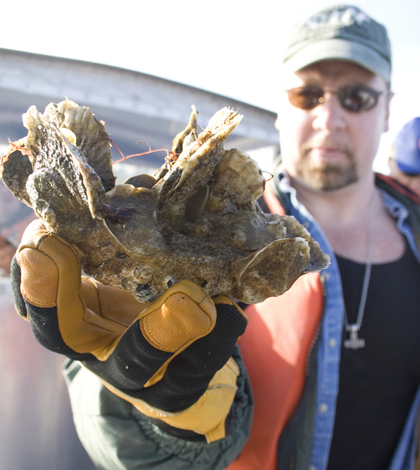Oysters could reduce nitrogen pollution in Chesapeake Bay

A study from the Virginia Institute of Marine Science has found oysters are highly effective at removing nitrogen pollution from streams, according to the Associated Press. Experts say the findings could be used in treating the pollutant in Chesapeake Bay.
The VIMS research studied nitrogen levels near a reef in Maryland’s Choptank River that had been seeded with oysters – around 130 per square meter. Over the course of one year, nitrogen levels around the reef dropped 20 times more than those at a control site that had not been seeded. Oysters indirectly remove the contaminant by consuming algae, which takes in nitrogen as food.
Chesapeake Bay is largely affected by nitrogen, phosphorus and sediment runoff. Elevated nitrogen levels have been linked with low oxygen pockets in the bay that lead to fish kills. Using oysters, experts say nitrogen runoff could be reduced in tributaries and the nitrogen contamination in the bay may be reduced overall.
Image: Norfolk District Oceanographer Dave Schulte displays a cluster of oysters which were growing on the district’s sanctuary reefs in the Great Wicomico River. (Credit: US Army Corps of Engineers, via Wikimedia Commons)





0 comments